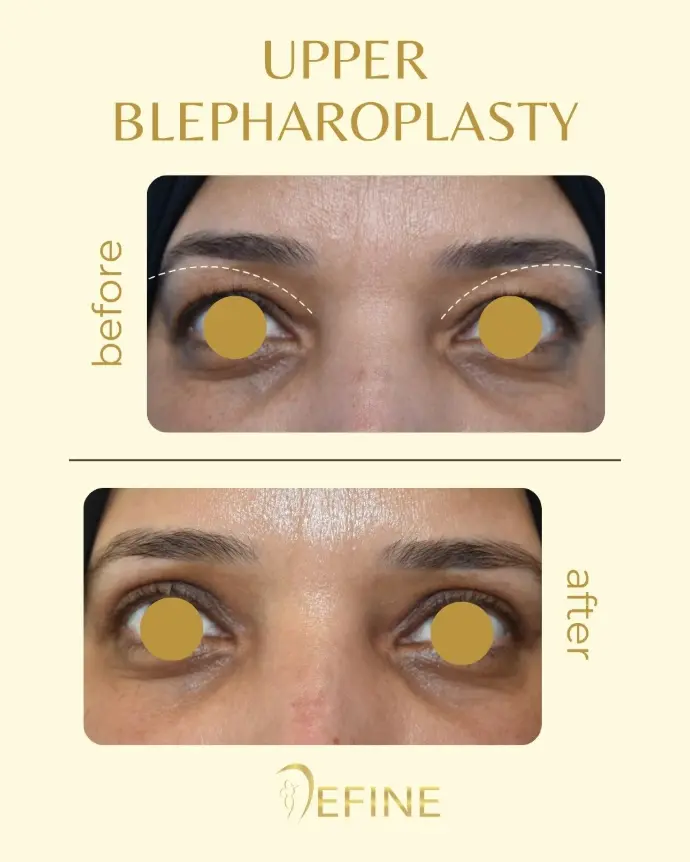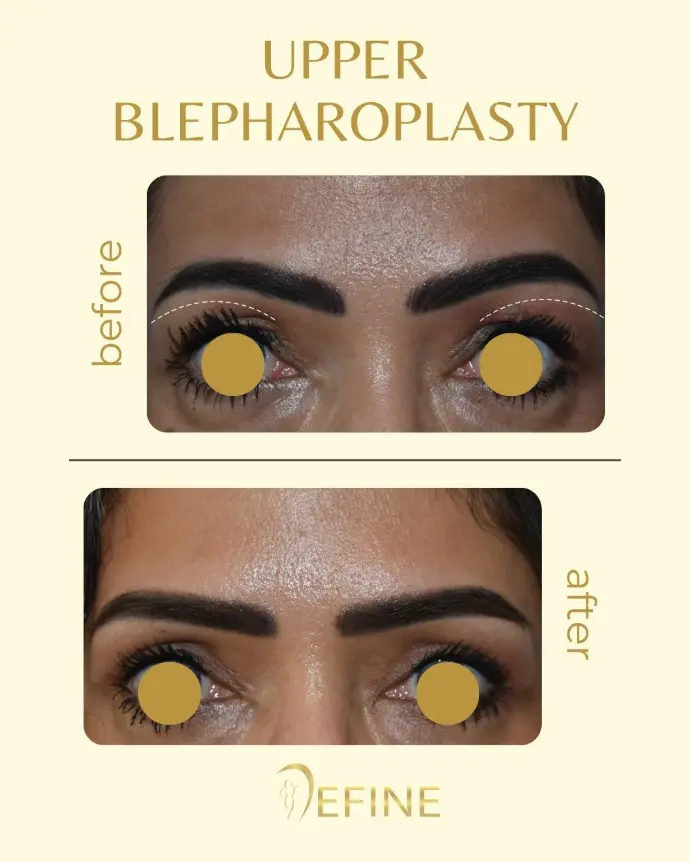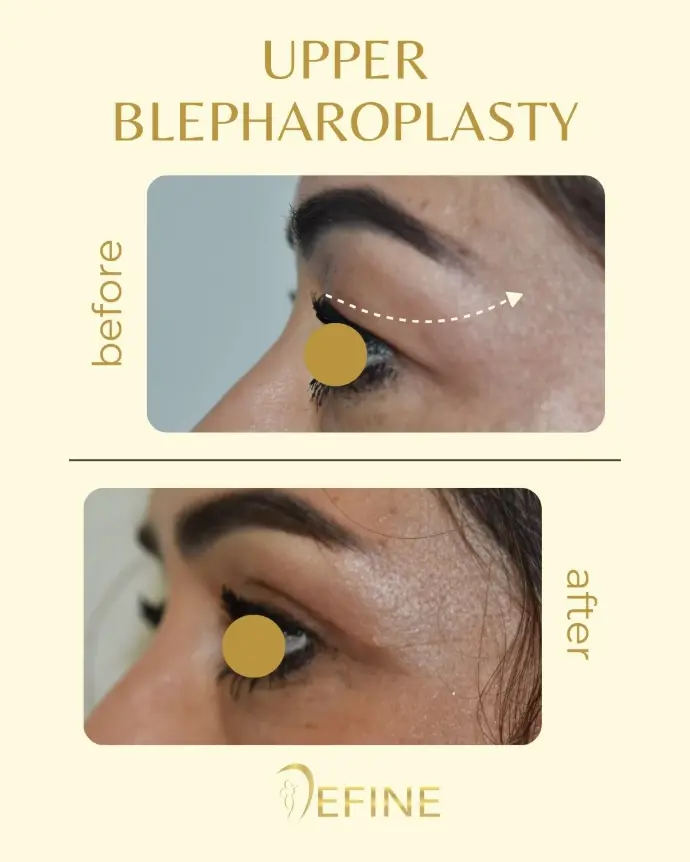Blepharoplasty, also known as eyelid surgery, is a cosmetic surgical procedure designed to improve the appearance of the eyelids by removing excess skin, fat, and muscle. It can be performed on both the upper and lower eyelids to address various concerns such as sagging eyelids, puffiness, and dark circles. Blepharoplasty can be done for cosmetic purposes to create a more youthful appearance or for functional reasons to improve vision if the excess skin is obstructing the field of view. The procedure can be performed on its own or in conjunction with other facial surgeries, such as facelifts or brow lifts.

Frequently Asked Questions about Blepharoplasty:
Ideal candidates for blepharoplasty are individuals in good overall health who are concerned about excess skin, puffiness, or sagging around the eyes. It is important to have realistic expectations about the results and a desire for aesthetic or functional improvement. People undego Blepharoplasty due to:
1. Aging Signs:
. Excess skin and fat on the upper eyelids
. Under-eye bags
. Wrinkles and fine lines
2. Genetic or Inherited Conditions:
. Ptosis (drooping eyelids)
. Inherited fat deposits
3. Functional Concerns (Visual obstruction)
4. Aesthetic Preferences
The procedure is performed under local anesthesia with sedation or general anesthesia, so you will not feel pain during the surgery. After the surgery, there may be some discomfort, swelling, and bruising, but these symptoms can be managed with prescribed medications and typically resolve within a few days to weeks.
Recovery time typically takes about 1-2 weeks for most people. Swelling and bruising may last for up to two weeks, and the results can continue to improve for several months. Most patients can return to normal activities after about 10–14 days, although strenuous activities should be avoided for several weeks.
Scarring is generally minimal, as incisions are placed along the natural folds of the eyelid or inside the eyelid. The scars usually fade significantly over time, becoming barely noticeable. In the case of lower blepharoplasty with an external approach, scars are placed beneath the lashes, making them discreet.
The results of blepharoplasty are long-lasting, with most patients enjoying their refreshed appearance for many years. However, the natural aging process will continue, and new skin sagging may eventually occur, although it will be much less pronounced than before the surgery.













